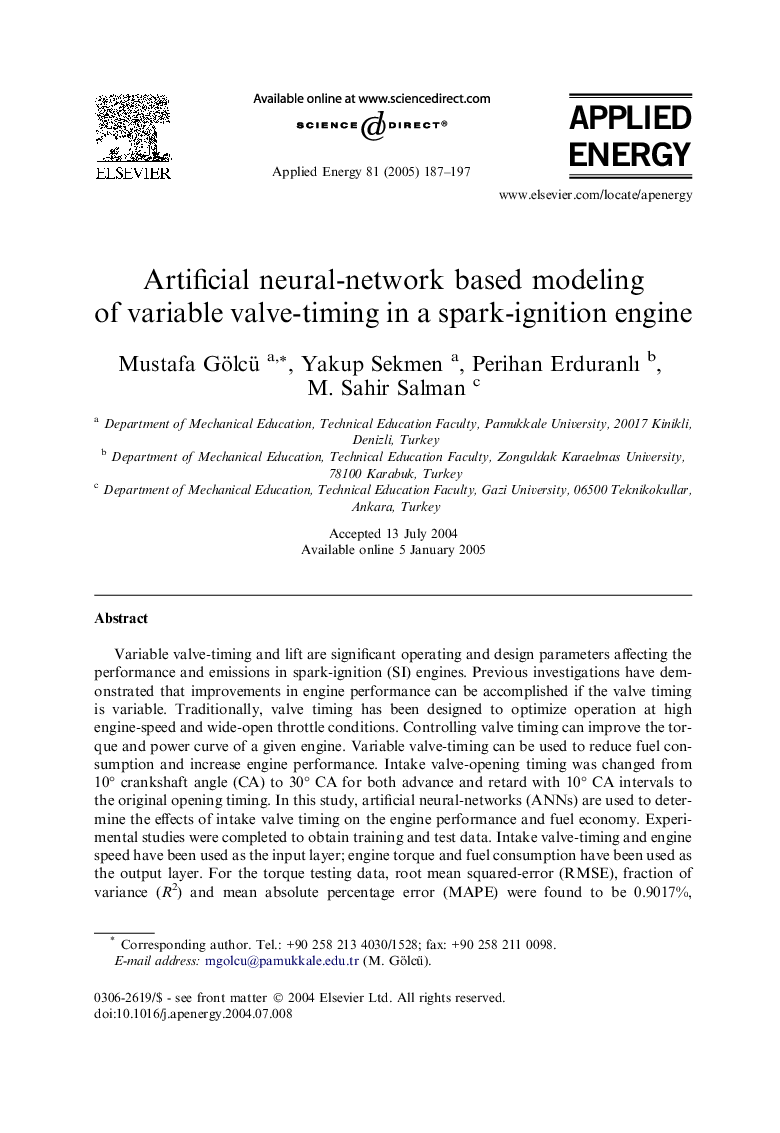| Article ID | Journal | Published Year | Pages | File Type |
|---|---|---|---|---|
| 10282062 | Applied Energy | 2005 | 11 Pages |
Abstract
Variable valve-timing and lift are significant operating and design parameters affecting the performance and emissions in spark-ignition (SI) engines. Previous investigations have demonstrated that improvements in engine performance can be accomplished if the valve timing is variable. Traditionally, valve timing has been designed to optimize operation at high engine-speed and wide-open throttle conditions. Controlling valve timing can improve the torque and power curve of a given engine. Variable valve-timing can be used to reduce fuel consumption and increase engine performance. Intake valve-opening timing was changed from 10° crankshaft angle (CA) to 30° CA for both advance and retard with 10° CA intervals to the original opening timing. In this study, artificial neural-networks (ANNs) are used to determine the effects of intake valve timing on the engine performance and fuel economy. Experimental studies were completed to obtain training and test data. Intake valve-timing and engine speed have been used as the input layer; engine torque and fuel consumption have been used as the output layer. For the torque testing data, root mean squared-error (RMSE), fraction of variance (R2) and mean absolute percentage error (MAPE) were found to be 0.9017%, 0.9920% and 7.2613%, respectively. Similarly, for the fuel consumption, RMSE, R2 and MAPE were 0.2860%, 0.9299% and 7.5448%, respectively. With these results, we believe that the ANN can be used for the prediction of engine performance as an appropriate method for spark-ignition (SI) engines.
Related Topics
Physical Sciences and Engineering
Energy
Energy Engineering and Power Technology
Authors
Mustafa Gölcü, Yakup Sekmen, Perihan Erduranlı, M. Sahir Salman,
